Weekly round-up: 01 - 07 Apr 2015
At last, at long, long last, the winter seems to be taking her leave of our shores…
The weather has improved, slowly but surely throughout the past seven days - the grey murk departing to the continent as the holiday weekend became more and more blessed by increasingly warm conditions, Easter Sunday seeing temperatures adjacent to 21 degrees C in Aberdeenshire.
Along with warm days, the calm conditions also brought some problematic fog and occasional chilly nights but plenty of sunshine too - even if this first burst of spring is only temporary, it was lovely not to have coats and hats and gloves on. It was also grand to see common migrants begin to pop up (albeit in small numbers of course), but those early April rushes of excitement as the new season begins remain thrilling and immense fun.
The birding may have still been a little more stuck on winter than spring but changes were obvious and new arrivals, such as they were, were most welcome.
There’s so much joy to be had when the sun shines, the temperatures rise and spring migrants make their way to us for another year. This week has seen a little wave of “year firsts” drop in to (mainly) southern England - from Nightingale to Tree Pipit, Common Redstart to Lesser Whitethroat, Yellow Wagtail, Hobby and Cuckoo - and there was no doubting the little buzz that surrounded our bird news this week.
It seemed as though the Megas were going to give us a miss - then the late afternoon of 7th brought news of a seen-briefly Crag Martin (for less than a minute, but well apparently) at East Dene, Bonchurch (Isle of Wight) for what could be (if accepted) an island first and just the 11th record for Britain.
April has managed two previous records - birds that remain the only easily twitched individuals - inland at Swithland Reservoir (Leicestershire) and then in West Yorkshire, at Pugney’s and Angler’s CPs on April 17th-18th 1999 and, of course, last year, noted intermittently around Flamborough Head (East Yorkshire) from April 11th-13th.
Britain’s previous 10 birds have been well spread, from Cornwall to Gwynedd and on up to Orkney but Sussex is still well ahead with three accepted records to date.
One brief mega aside, there was arguably more interest in a few spring overshoots that were off some significance - so where better to start than on one of Britain’s most stunning island groups…
The Isles of Scilly is, so often, for the most obvious of reasons, at the vanguard of all that is good about early spring birding in Britain - often they get the nicest weather (not always, but often as not they do…) and with that decent weather comes decent birds.
The last couple of reviews have seen us able to enjoy the photos and videos of the delightful Desert Wheatear that took up a temporary residence on St. Agnes. This week, although clearly not the rarest birds of the week, the arrival of not one, not two, but three Night Herons around Lower Moors on 2nd was something to get quite excited about…
The first of this nocturnal trio was actually seen heading over Carn Gwarval and heading towards the dump clump during the middle of the afternoon. Those who turned out on Lower Moors for the evening performance were then treated to three - one landing near the Project Pool, the others landing near the standing stones (at the Old Town end of Lower Moors).
From there, it got a little complicated, perhaps as many as six were noted through to the evening of 4th on St. Mary’s (up to five adults and a first-summer) - two adults heading towards Porth Mellon at dusk, while two were in the Higher Moors sallows, what may have been a different adult flew towards Porth Hellick along with a first-summer nearby too. Another bird from the day before was heard on St. Agnes on 4th while the evening of 5th saw three noted on St. Mary’s and three more were seen on the edge of the Great Pool on Tresco.
Night Herons aren’t a tremendously rare bird, but they are one that manages to add a much needed injection of excitement to the flaccid feeling that lingers on as winter drags its heels and leaves us. Scilly in March and April is a great time to encounter the species too - the middle of March last year saw a single bird appear on St. Mary’s where it remained for four days. Two birds were noted over Porth Hellick on April 10th 2011; the middle of March in 2007 saw two birds arrive, one briefly on St. Agnes, the other spending two or three weeks around St. Mary’s while the middle of March 2006 saw at least three adults noted, also on St. Mary’s, with singles also on St. Agnes and Tresco.
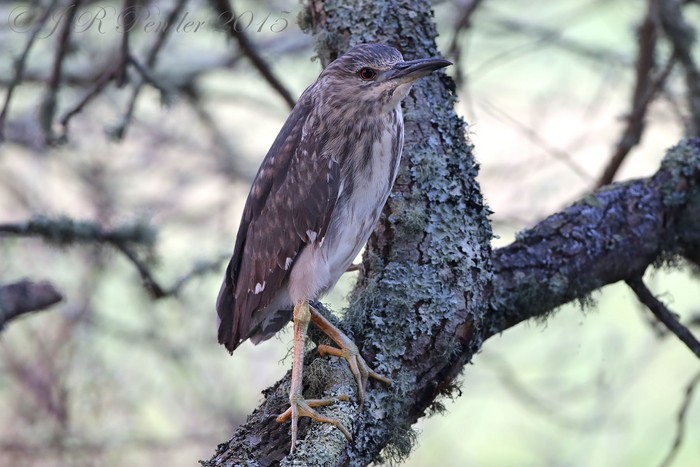
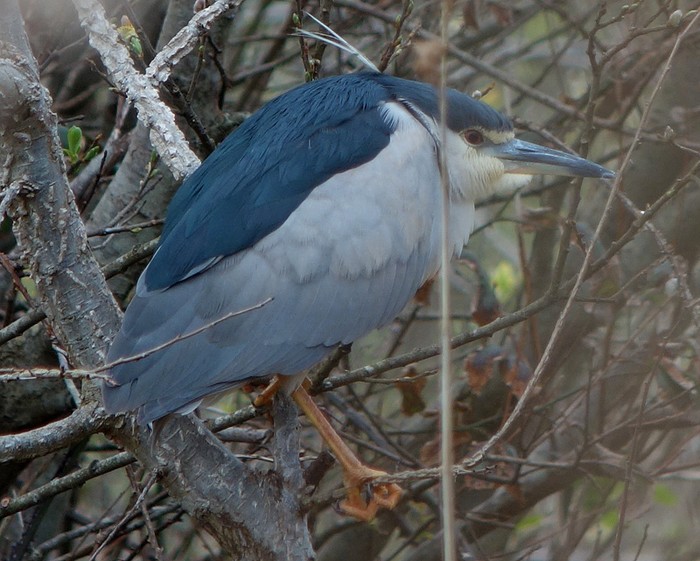
All very impressive, but it can’t quite match the very early spring of 1990 - Scilly rattling in nine birds from mid-March to late April, with most arriving in a shortish period from 17th onwards, all bar one of them being adult. The influx spread to the far southwest of England too, six in Cornwall between March 20th-29th with three more in Devon from March 16th - whilst eight made it within the same mid to late March period in west Wales too. There’s a little way to go then for this year’s sextet+ - but it is pretty impressive stuff nonetheless.
The second ray of early spring sunshine that plonked itself on to the south coast this week was the Black-winged Stilt that was discovered at Abbotsbury Swannery (Dorset) on the morning of 3rd.
Unless there’s a flock or a breeding pair, this spectacular overshoot is generally given the cold shoulder nationally but at local levels B-w S are still big news - indeed, this is the first in Dorset since May 2012 (when one spent four days at the same site as this week’s) and is only the 15th county record as a whole. It remained in the area to 7th.
Mini-digression alert…memory lane approaching…
Despite not being able to remember to turn the cooker off or what I did an hour ago, my birding brain and, in particular, certain dates from my three decades+ of twitching remains on the razor’s edge side of sharp…
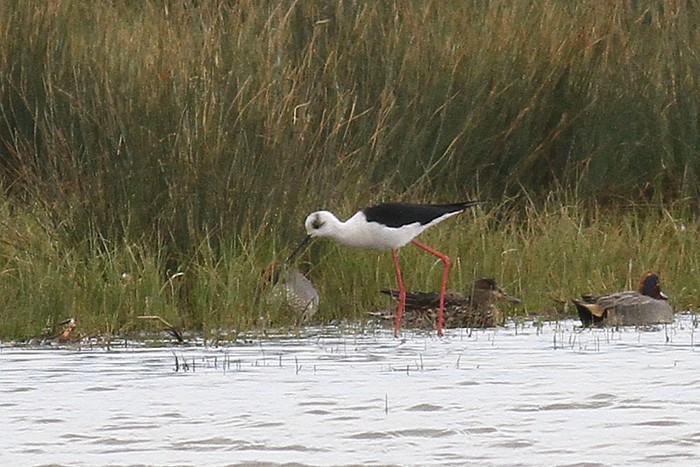
Funny - as soon as the news of the Dorset Stilt popped up, it struck an immediate chord of familiarity…April 3rd was the day I ticked the species, 30 years ago to the very day at a sodden Looe, in southeast Cornwall. Hitching across Dartmoor, from the north end to the south end in the pouring rain was one of the most miserable experiences you can imagine - the need for a tick keeping the thumb aloft through the early April dawn. Brief respite came along the dual carriageway opposite the Crownhill Police - a lift to Saltash, across the Tamar Bridge, courtesy of a little van full of warm pasties! What a magical smell! The driver gave me two and life was sooooo much better…!
The biblical rain eased to merely heavy and despite Pete Morris and crew driving past, stopping with an apologetic “we’ve got a car full…”, Looe eventually came in to view and so did the Stilt. Awesome! What a bird! TICK! Drenched but supremely happy, I bagged a lift back to Plymouth from Paul Kemp in his yellow Beetle and dried off at the famous birding flat at 87 Mount Gould Road. Happy days? You bet…
After a couple of days of “no show” the first-summer drake Harlequin was located again along the River Dee in Aberdeen and he continued to show there, in all his increasing finery through to 7th - the century mark drawing ever closer with every passing April day.
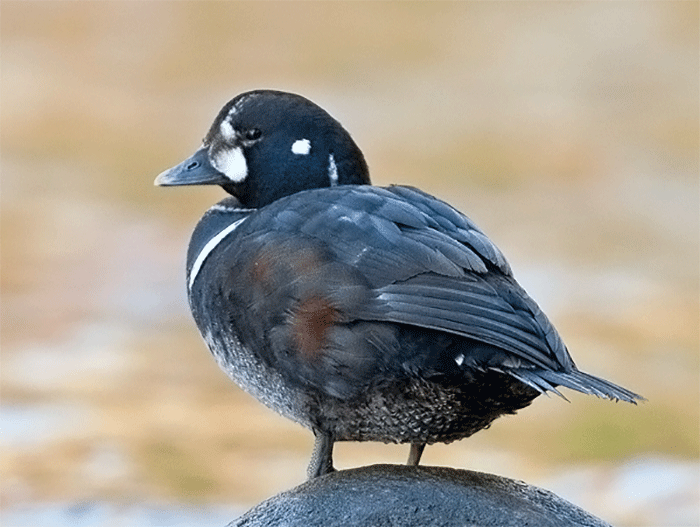
Scottish Easter long-weekenders also had chance to enjoy a second Harlequin if they so wished - the female still seemingly quite content with her seaward surroundings of the Sputie Burn, just south of Brora (Highland) - present there until 6th.
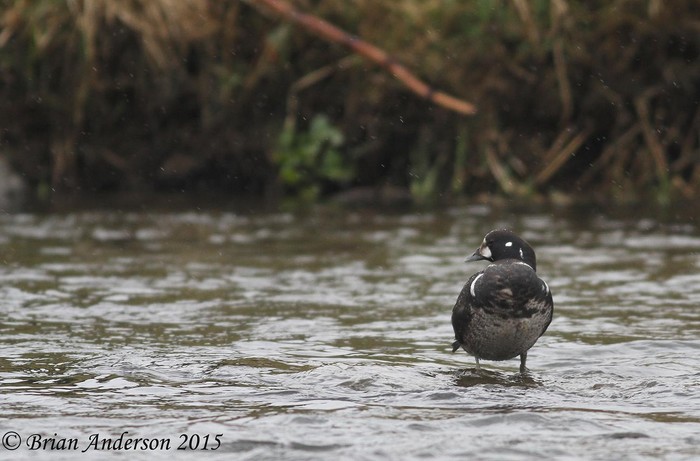
Coming along as a Nearctic watery tag-team are the drake Black Scoter that remained off the coast of County Kerry, near Rossbeigh, through to at least 3rd while to the north, on the Outer Hebrides, the American Coot closed in on the long-stay record, present on North Uist’s Loch nam Feithean through to 3rd as well.
That one has an imminent departure date coming up…
…and so it was - no sooner had that been typed then news came out of the island on 6th to suggest that either 3rd or 4th was the final date for this wintering critter - making it a stay or either 139 or 140 days and falling short of the bird mentioned here a week ago (on Shetland for 146 days in 2004/’05). So much for my April 11th prediction…
”Goodbye, farewell, auf wiedersehen, adieu.”
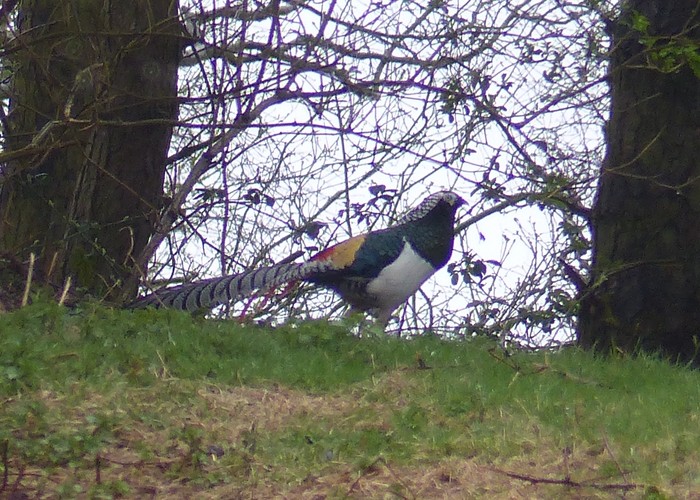
…and so to the bizarre, faintly ridiculous tale & saga of the Lady Amherst’s Pheasant that made the pager light up on April 2nd -crikey, is this what twitching has come down to now?
Really?
Oh puuuuuuurleeeeeeeeeaaaaaaaasssssssseeeeeee
It is, of course, the easiest thing in the world to do - dismissing the mini-hullaballo that followed the “leaking” of the news that there really was still one of the most alluring “Plastic Fantastic” species (a species with barely a fingertip grasp on the British List) - Lady Amherst’s Pheasant - at large in Bedfordshire. But if you “needed” it and were given to think that they were (in UK terms) extinct until this news seeped like a weeping sore, then this week’s news would have come as an undoubted Easter boon.
Once upon a time, you could tick the species at sites not only in Bedfordshire (and elsewhere in the Home Counties) but also in north Wales - in and around the churchyard at Halkyn (beware the dogs over the wall mind…). All that changed through the late 80’s and early 1990’s and it soon became clear that the species was reducing in numbers (they were never prolific) at a rate that would render them almost impossible to see at some point.
Through much of the mid-2000’s there was only one way to see them - guided tours basically - and then it all went quiet. It seemed as though they’d gone…no more…kaput…the pheasant was, actually, a dead parrot.
But not so! HURRAH!
Occasional dribbles of news kept coming through the late 2000’s and onwards from then. Clearly, judging from the online chit-chat and also a mini Twitter spat between the “old guard” and the” new generation”, there’s been something going on at the site at Liddlington for a little while, with some mentioning they’d been there recently (before the news was broken…naughty, naughty…) - but it all got rather tiresome, rather quickly…he said, you said, “my gen’s better than your gen nur-nur-nee-nur-nur” and all that playground jazz.
Bottom line, for those who have a little hole in their lists where it says Lady Amherst’s Pheasant well, they will be rather glad that news is out in the public domain, the perceived cabal broken and a lifer beckons.
That it is a species that is one of the most questionable on the British List (more so than the beloved Hooded Quacker…) is neither here nor there. A tick’s a tick right?
Bedfordshire recorder Steve Blain grasped the nettle to try and prevent any unseemly behaviour at the site - see here for more…
http://bedsbirdclub.org.uk/where-to-see-the-last-lady-amhersts-pheasant
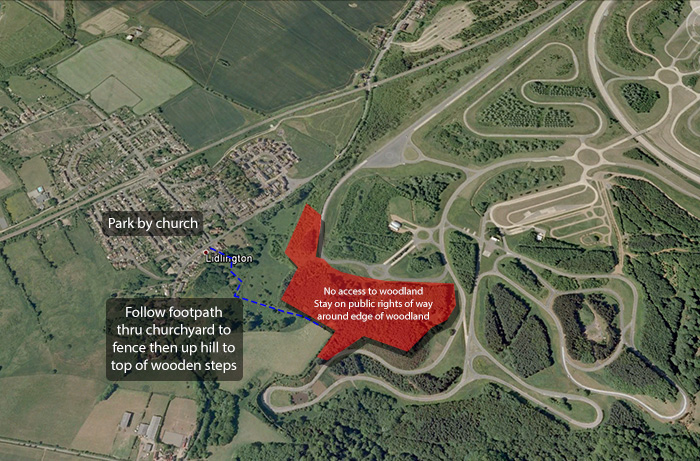
There we go then. Lady Amherst’s Pheasant lives on. It drew birders every day this week, many of whom dipped. There’ll be pager news until this one pegs it presumably. However, it won’t be a species that will appear here again. Not on my watch.
Before departing the whole gamebird thing, the real world of interesting semi-vagrancy popped up on 5th with news of a Red Grouse making landfall on the Isle of May (Fife) for an apparent island 1st. Hot on the heels of the bird that alighted on Flamborough Head in March last year, this is another fascinating record to speculate upon in terms just how far it has travelled (minimum is some 20 miles). Which is rather further than a L.A.P. you’d think…
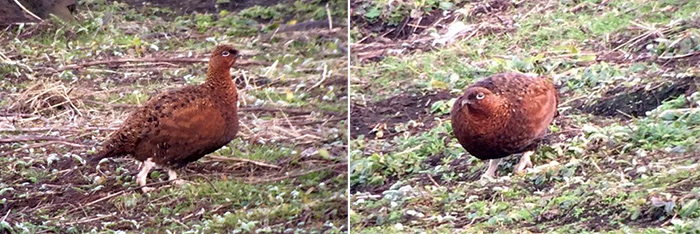
The now annual trip out of Portsoy aboard the M.V. Gemini Explorer managed an impressive first-time out haul for 2015 on 4th - at least 10 White-billed Divers logged and photographed off the Aberdeenshire coast. Land-lubbers had managed at least three looking out to sea earlier in the week, while the action began (hopefully…) off the traditional migration spot of Skigersta harbour, near Port Nis, Lewis (Outer Hebrides) on 5th.

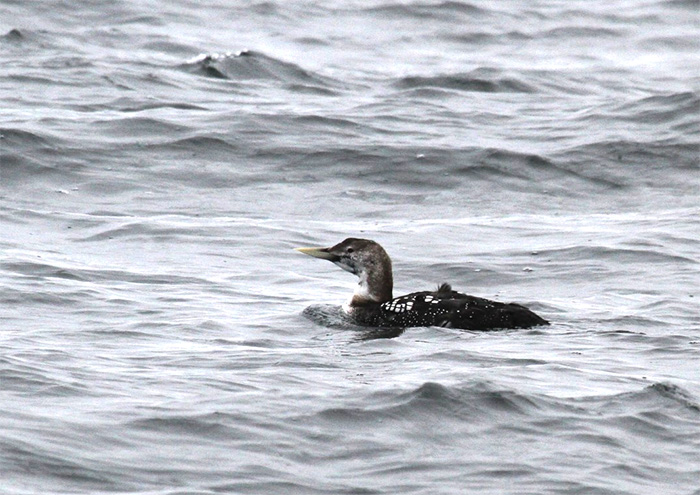
Little surprise that other pelagic species didn’t really figure too highly in the week’s proceedings - a Little Auk was recorded off Flamborough Head (East Yorkshire) on 1st and three Pomarine Skuas headed north past Landguard NR (Suffolk) on 4th.
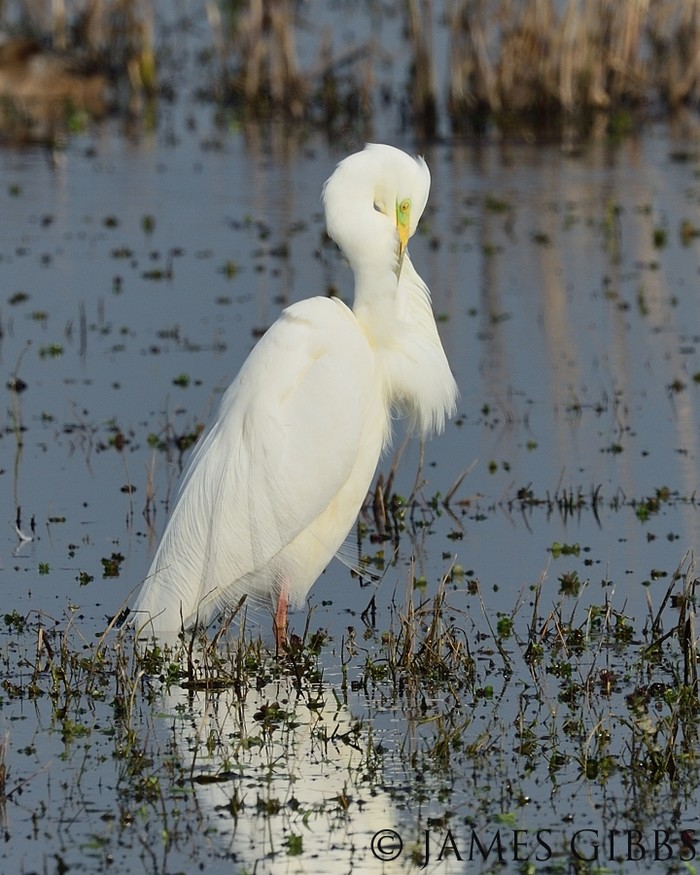
What was assumed to be a “lock-up” White Stork was seen over Haddiscoe Marshes (Norfolk) on 4th - but that roaming bird O.U.O from Suffolk and the Norfolk border must be somewhere (though it too may have found a way there from Thrigby Hall too…).
Still keeping it real in Kent were the pair of Cattle Egrets on the Denge Marsh, Dungeness -both present and correct to 6th (if they’re truly a pair, something will start happening soon…surely?) - with two Great White Egrets in the general area to the same date.
Also in the southeast of England, along with the Dunge Double, birds were also noted at Amersham (Buckinghamshire) on 2nd with maybe the same individual then doing a brief Saturday morning tour of three sites in Hertfordshire, while on the coast singles were seen at Rye Harbour (East Sussex) on 3rd and at Sidlesham Ferry (West Sussex) on 5th.
Elsewhere, the Somerset Levels began to become the hub of the Great White action - at least six were seen at Ham Wall RSPB on 4th, with these (or others) dotted around across a further three or four sites within the Avalon Marshes.
The Midlands and East Anglia held four birds each - the former seeing two singles logged in Northamptonshire (at Summer Leys NR on 1st and Ditchford GPs on 3rd-4th), Leicestershire (ever-present at Rutland Water to 5th) and new at Willington GPs (Derbyshire) on 1st. To the east, two Great White Egrets were seen on the Ouse Washes RSPB (Cambridgeshire), also on the first of the month, while there were lone birds still at Lakenheath Fen RSPB (Suffolk/Norfolk border) to 5th and in Norfolk itself at Welney WWT and again at Burnham Norton, both to 6th.
Another new bird was seen in Cleveland, at Cowpen Marsh during 3rd (and again on 7th) while a lingerer was at Llangorse Lake (Powys) to 3rd. Ireland recorded three this week - one has been seen “recently” near Skibbereen (Co. Cork) with others heading over Lisselan, Tramore Backstrand (Co. Waterford) on 4th and in Mayo, out on the Mullet, on Annagh Marsh on 7th.
We’re still on three Glossy Ibis this week - still to be found in the wet pasture at Gonalston (Nottinghamshire) and inland at Fen Drayton Lakes RSPB (Cambridgeshire) to 6th and in Ireland, at Tramore (Co. Waterford) to 7th.
Spoonbills were in rather fuller supply - the south coast still seeing most of the action, with 15 at Arne RSPB (Dorset) on 4th the week’s highest count. Next door in Hampshire, April 2nd saw two birds noted at Warsash and then three at Normandy Marshes (with two the following day at Titchfield Haven NNR), while up to four were around Bracklesham Bay (West Sussex) to 6th. Around the corner in north Kent, a lone bird was at Elmley, on Sheppey, on 5th and then three birds were noted at Rainham Marshes RSPB (London) on the early morning of 7th.
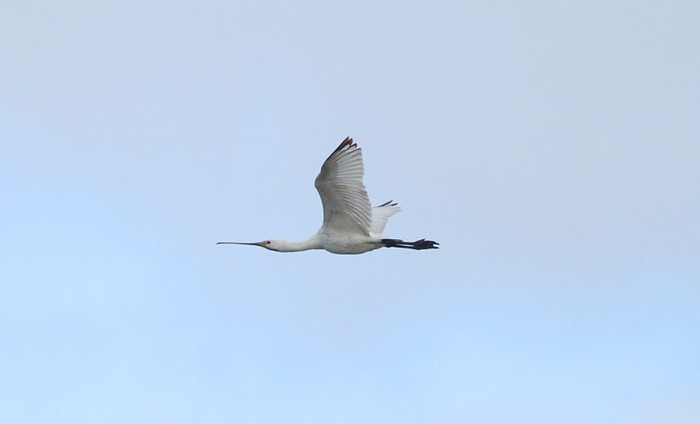
Further afield, two Spoonbills headed south over Spurn (East Yorkshire) on 4th, noted a couple of hours later down the coast in Lincolnshire, at Donna Nook. Norfolk hosted a singleton at Salthouse on 5th and two were over Upton Marshes NWT on 6th (with two or three more along the north coast on the same day) and another duo remained at Minsmere RSPB (Suffolk). Far flung birds were still to be seen on Samson (Scilly) to 5th and at Tacumshin (Co. Wexford) to 6th.
Ireland’s largest flock of Common Cranes in nearly four years was seen in County Louth this week - nine birds noted heading across the M1 near Ardee on 5th. The only recent records that better this were the 33 noted in County Cork in mid-November 2011, which included a well seen flock of 19 birds around Midleton.
Further Cranes started the week at both the Ouse Washes RSPB and Minsmere RSPB on 1st, with three logged over Norwich and then near Acle (Norfolk) the following day. Numbers on the Ouse Washes rose to six by 3rd with the 4th seeing three head over the RSPB reserve at Titchwell on the north Norfolk coast. Easter Sunday saw mention of four birds in the Broads, at Hickling; another Norfolk bird headed over Cley, then Holt during the early evening and another single drifted over the Eagle site near Stanhope (Co. Durham). The final one of 5th was reported from Maidwell (Northamptonshire) whilst 6th saw as many as six appear in south Wales, two seen at Newport Wetlands NR (Gwent) (perhaps the same two were then noted at Barry in Glamorgan) with four high over Cardiff too.
With spring getting in to gear, there were fewer Black Brants to report this week- a single remained at just Kilnsea and Spurn (East Yorkshire) to 5th while in Suffolk one was at Trimley Marshes on the same date, with two at nearby Loompit Lake on 7th.
After quite sometime without a handsome drake King Eider to report at least two popped up this week, both of them familiar birds - one (at least one...) was seen again off the Moray coast, at Burghead and also Spey Bay during the afternoon of 4th.As the Eider flies, the two sites aren’t too far apart and there were a couple of hours between viewings. In Aberdeenshire, the traditional summering grounds of the Ythan Estuary drew the week’s second adult drake back in to the review fold, present there on 5th-6th. Two Kings then, but there was still one Queen too - she remained at Ruddon’s Point, Largo Bay (Fife) to 7th.
Wirral's first Surf Scoter
 ...After a 1.5km walk across mudflats I arrived at the water's edge. I was stunned at what I found. Not hundreds, nor thousands but tens of thousands of Common Scoter all feeding just offshore from the low water mark. It was incredible, it was a truly impressive ornithological spectacle....
...After a 1.5km walk across mudflats I arrived at the water's edge. I was stunned at what I found. Not hundreds, nor thousands but tens of thousands of Common Scoter all feeding just offshore from the low water mark. It was incredible, it was a truly impressive ornithological spectacle....
Read Allan Conlin's finders account here
On the Wirral, Cheshire’s first Surf Scoter was joined Cheshire’s second Surf Scoter on 4th - an adult drake seen alongside a first-winter drake (the latter now thought to be the original bird found last week). A report of four drakes, also on 4th, remains a report only but at least one of the gen ones was on site until 7th.
Three adult drake Surfies remained in Conwy, in Colwyn Bay to 2nd, a date which also saw two drakes noted on Mainland Orkney, in Deer Sound, near Deerness. Also on 2nd, the young drake was again at Stutton on the Suffolk & Essex border, while at leats adult drake was seen in Lothian, at Joppa and also Mussleburgh (lingering at the latter site to 5th).
County Roscommon’s first-ever Lesser Scaup remained on the turlough at Castleplunket to 4th and was one of two Irish drakes this week - the other noted again on Sligo’s Lough Gara to 5th. In south Wales, the regular drake moved on to Cardiff’s River Taff for a day or two at the start of the week , heading back in to the Bay by 2nd (then back on the river on 7th) and in Scotland, the first-winetr drake remained at Martnaham Loch (Ayrshire) to 6th.
Brand new was the end-of-week drake Lesser Scaup found at Trimley Marshes SWT (Suffolk) on 7th. Despite the recent removal from the BBRC list of species that they adjudicate upon, this remains crinklingly rare on the far east coast - this will become only the thrird for the county, following on from a first-winter at Surrfolk Water Park, near Bramford on March 16th 2004, with an adult drake (maybe the same drake?) at the same site for eight days in mid-May 2006. Famously, Norfolk still awaits the species...one of just a handful of counties yet to welcome this North American vagrant that was first recorded here 28 years ago,
Along with the mini-invasion of Scilly Night Herons one of the week’s most eyebrow raising occurrences was the flock of four Ring-necked Ducks in Oxfordshire, found on the pits at Standlake on 4th and still in place there until 7th. The county’s first since an April drake at Otmoor RSPB in 2010, the three drakes and single duck were one of the draws of the weekend and two of the frisky things were observed “doing the do” over the weekend - crivens!
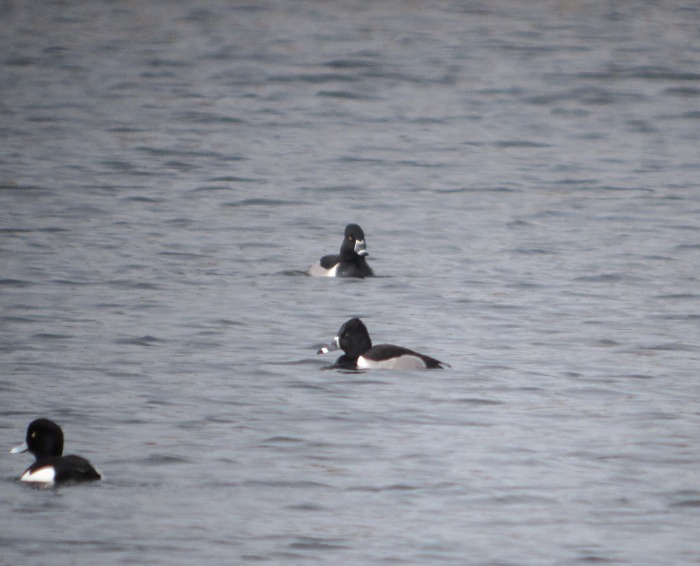
Other records this week included the roaming drake in east Norfolk - seen at Cantley Beet Factory during the middle of the afternoon of 1st before heading back to Hardley Staithe around teatime with the last report coming from the latter site the following day. Single females remained at Lough Skean (Co. Sligo) to 1st, Billing GPs (Northamptonshire) to 2nd and Loch Scarie, North Uist (Outer Hebrides) to 3rd while a new drake was located in Derry, on Lough Beg on 3rd.
The Isles of Scilly continued to host the drake Black Duck throughout much of the week and the same island hosted two drake Green-winged Teals on 4th. They were part of a weekly tally of nine birds in all - a new drake appearing at Frampton-on-Severn (Gloucestershire) on 4th-5th while regulars from recent weeks remained at Stocks Reservoir (Lancashire) and Abberton Reservoir (Essex) to 3rd, the Ouse Washes RSPB (Cambridgeshire) and Dorman’s Pool (Cleveland) to 5th and at both Greylake RSPB (Somerset) and Loch nam Feithean, North Uist through to 6th.
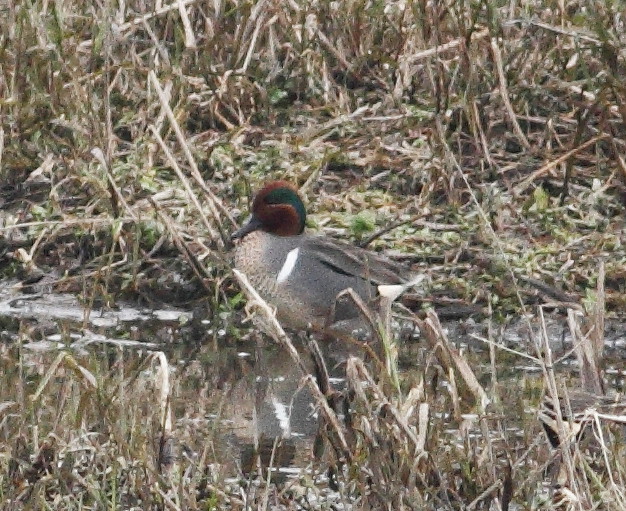
Looks like we’re down to only three American Wigeons now - single drakes at Holme Pierrepont (Nottinghamshire) and Swillington Ings (West Yorkshire) both to 6th (the last of these two presumably having moved across from Normanton) while one was found on Orkney, at Loch of Harray, Mainland, on 7th.
This week the only shorebird news of note is the lingering first-winter Lesser Yellowlegs sticking it out on Dublin’s Rogerstown Estuary to 6th.
Still showing nicely throughout the Easter weekend was the rather pleasing first-winter Bonaparte’s Gull in Dorset, present at Radipole Lake RSPB through to 7th with the second recent first-winter at Tramore (Co. Waterford) to the saem date. Two single adults were still to be found in Cardiff Bay (Glamorgan) to 4th and again at Ormsary (Argyll & Bute) on 6th.
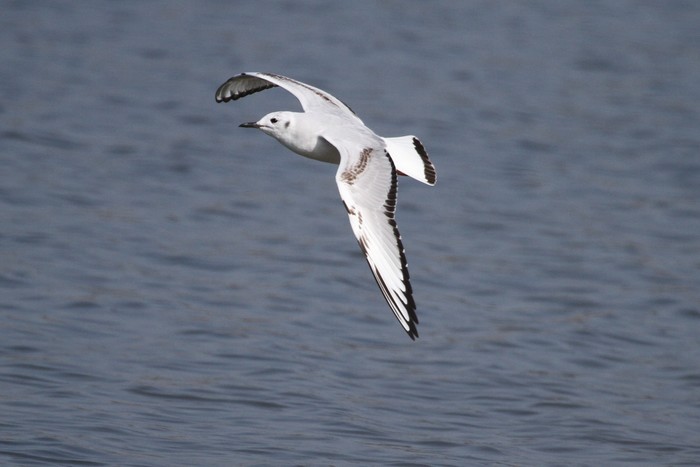
Getting itchy feet it seems is the popular first-winter Laughing Gull which took a mini-excursion across the water to Seaforth LWT this week - seen there on 5th and again on 6th and 7th (whilst still spending much of its time a couple of miles away around the pier and pontoon at New Brighton). Those little sojourns across the Mersey has made this particular sniggering larid only the fifth record for Lancashire & North Merseyside and the first since a one-day adult at Marton Mere in May 2009.
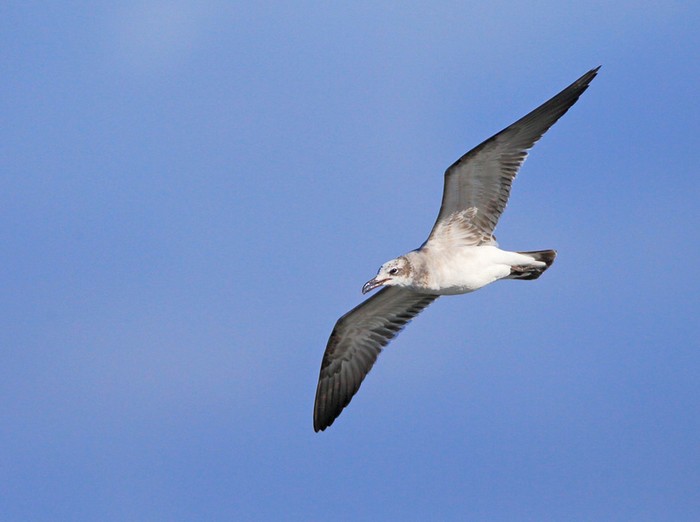
The second Laughing Gull of the week was again at Ballycotton (Co. Cork) - the first report since March 19th.
For the first time in months, Ireland fell below the double figure mark for Ring-billed Gulls this past seven days, just the eight reported from four well spread counties. Three adults were again at Merrion Strand (Co. Dublin) on 3rd, two were seen at Wexford Harbour on 1st, an adult and a first-winter there then, with the youngster present to 4th. Cork hosted two; a first-winter at Bantry on 3rd-4th with an adult at Cuskinny Marsh on 5th with the final bird being an adult for Kerry, seen at Carrahane Strand on 2nd.
Three of the four remaining Ring-bills this week were in Scotland - a first-winter reported briefly from Barassie (Ayrshire) on 1st, the adult was still in the Highlands, at Dingwall, to 4th at least and the first-winter remained on North Uist, at Balranald RSPB to 6th. Englan’ds only Ringo was another first-winter, this one seen near Pendeen (Cornwall) on the evening of 6th.
After a couple of weeks with small dips in numbers and then holding their own, there was an early April spike for Glaucous Gulls this week - at least 50 recorded across 26 British and Irish counties. The Cletic nations of Scotland and Ireland fared best - 22 for the former, 17 for the latter - with at least six noted around the Hebirdes during the last seven days, while Mayo scored seven (three on the Mullet, three on Achill Island) and Donegal five (including three+ around Mail Head). Numbers across England and Wales were low - the northeast peaking with four birds in three counties. It was downhill after that, though mention should be made of the ringed bird from Essex that rocked up in Northamptonshire recently - it was still seen, off and on, at Stanwick GPs to 7th.
A slight drop for Iceland Gulls this week; 82 were counted in 27 English, Welsh and (mainly) Scottish counties, with 24 noted in seven Irish counties too (the total of some 106 birds down just a tad on last week’s figures).
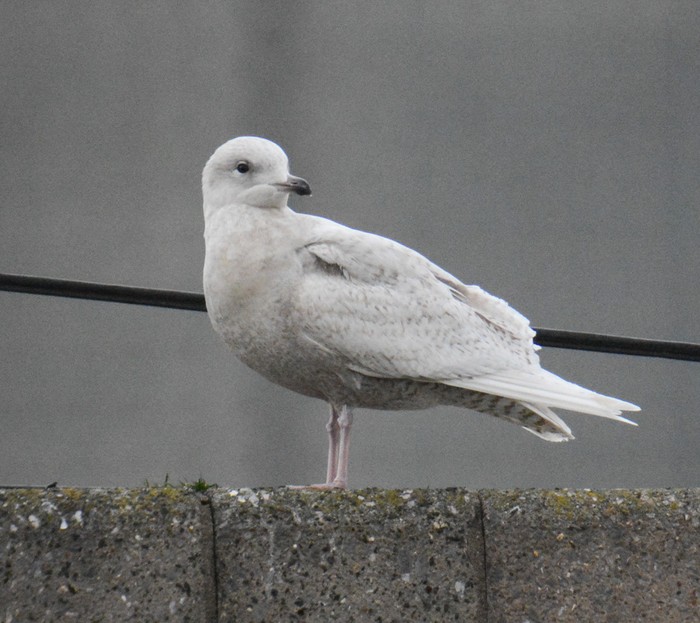
Around 23 birds were logged around the Outer Hebrides, with 12 (11 of them juveniles) still around the harbour at Stornoway on Lewis on 2nd-3rd. A second double figure single site count came from Donegal, where 11 (10 young ones) were noted at Malin Head on 3rd, part of the county’s total of 17 birds in all.
Back in Scotland, at least eight Icelands remained in Argyll & Bute, seven were on Orkney, Highland held six and Shetland had five. The northeast of England scored up to 11 birds in all, with three in Northumberland, with the northwest registering up to five in all. Elsewhere, slim pickings all round...
In south Devon, the adult Kumlien’s Gull photographed at South Milton Ley on March 28th was back on 3rd-4th (and again on 7th) and was one of five of the form noted through the week - a juvenile remained on Lurgan Park Lake (Co. Armagh) to 6th; a juvenile was off Fanad Head (Co. Donegal) on 5th; a third-winter was noted around South Uist (Outer Hebrides) on 5th-6th and the third juv of the last seven days remained at Ormsary (Argyll & Bute) to 6th.
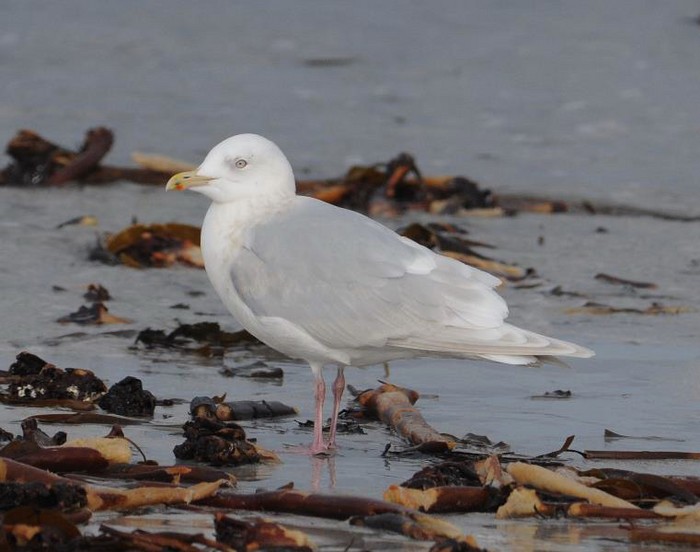
Finally, news from Cornwall of the second-winter American Herring Gull that was reported again briefly from the fields near Jericho Farm, St. Just on 3rd and then, on 6th, for 20 minutes at Drift Reservoir.
A last gasp white Gyr popped up over Inishbofin (Co. Galway) on 7th to give one of last week’s predicted species a showing. Hurrah!
An interesting bit of news cropped up regarding the White-tailed Eagle present in Durham, mainly near Stanhope, from March 24th to April 4th - turns out that the the bird was a juvenile female that had been ringed on Mull last June.
The juvenile Rough-legged Buzzard that appeared at Lochindorb (Highland) last week was still being noted through to 6th. Also still in situ through to Easter was the wintering juvenile out on Wallasea Island (Essex) to 5th along with three remaining in Norfolk; still at Burnham Overy to 5th (with presumably the same bird over Scolt Head on 7th), Halvergate Marshes to 6th and Breydon Water to 7th. Also this week, on 5th, came a report of an adult on Wearside, over Sunderland and another saw out the week on the east coast, at Buckton (East Yorkshire).
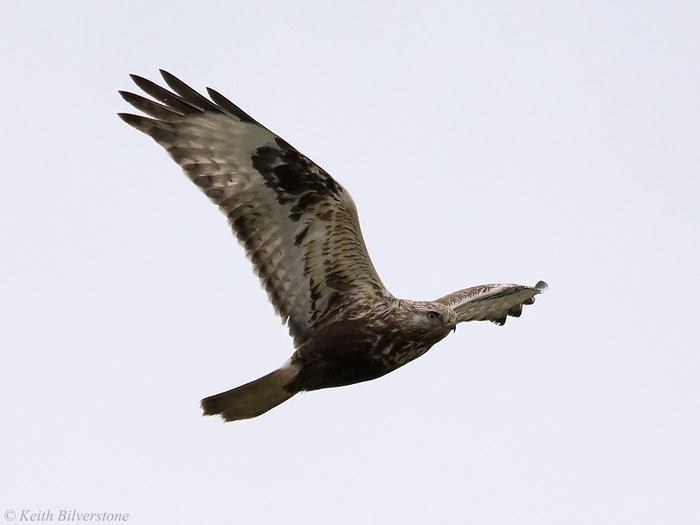
Whilst we’re at it, let’s give Osprey an honourable mention and doff the Rarity Roundup cap t’wards it- the warming weather of 6th produced upwards of 60 birds arriving in to the country, all bar two on the west side of the country or through the central spine of Britain. Even with some duplication (there won’t have been too much, if any), that’s a mightily impressive total.
As many as 20 were seen through the middle of the country (from the Home Counties through to South and West Yorkshire), a dozen were noted in the northwest (from Staffordshire in to Lancashire, with five over Greater Manchester) and around 13 were reported in southwestern England.
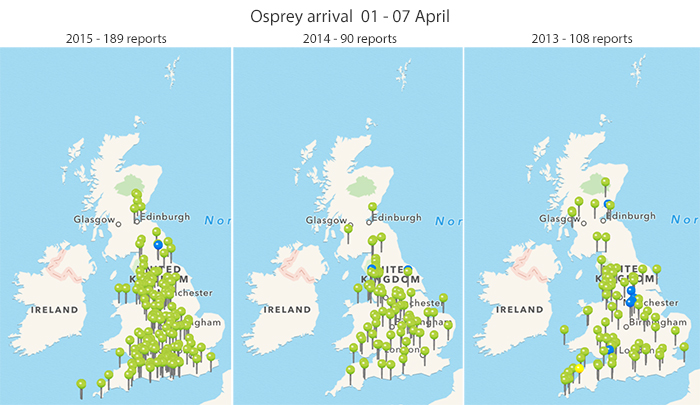
East coast birders may have to wait for a day or two yet it seems. Prior to that, 27 or so pushed through on 5th, again almost all on the west side or down the middle...so it was “game on” for this eternally exciting BoP.
A little bit of belated news starts things off in Passerine Corner this week - a singing male Woodchat Shrike being reported at Porthgwarra (Cornwall) on the last day of March (but with no report known of until the weekend just gone).
New this week, three single Serins - a male noted in the dunes at Hemsby (Norfolk) on 3rd; the second bird, a singing one this time, found at Corfe Castle (Dorset) on 4th with a second in the county, briefly in the garden at Portland Bill on 7th.
Also new, a significant little flush of wonderfully bendy Wrynecks as the review week concluded. The first was found in Cornwall, at Morwenstow on 6th and was followed on 7th by half a dozen individuals - two on St. Mary’s and one St. Agnes (Scilly) with Wales claiming the other three; one on Bardsey (Gwynedd), one at Penally (Pembrokeshire) and a brace on Skokholm were the 9th and 10th records for the island.
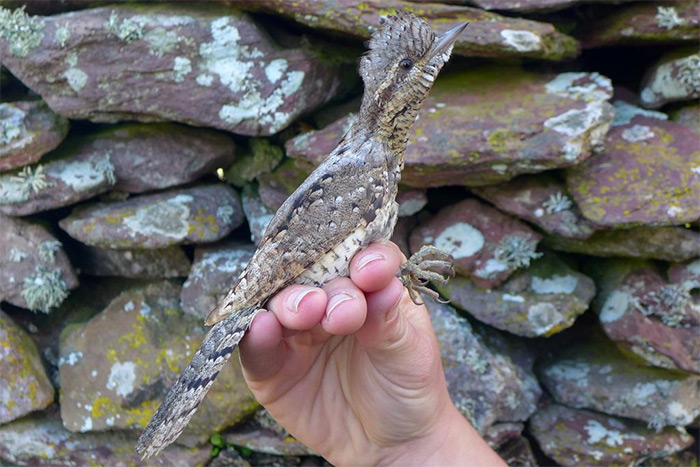
The 7th was a modestly productive day - two Hoopoes pitched up on Scilly, on the Garrison, St. Mary’s, the other over on St. Agnes near the lighthouse. Earlier in the week, two Hoopoes were reported from Devon on 2nd, one on the edge of Dartmoor, at Tavistock, the other up along the edge of the River Exe, in Exeter. A third report came from Redditch (Worcestershire) on 4th.
One final unconfirmed report to touch on (that’s a habit that needs to be lost again, quick-smart) was of an Alpine Swift heading southeast over Pegwell Bay (Kent) on 6th.
Wintering goodies now - ever-diminishing returns too with the just one Little Bunting remaining in to this week, still be seen in south Wales, at Forest Farm, near Cardiff (Glamorgan) through to 7th while Devon’s wintering Penduline Tits remained at Darts Farm RSPB to 4th before making a surprise pre-departure visit to Seaton Marshes (in the far east of the county) on 5th. Wonder where they’re off to?
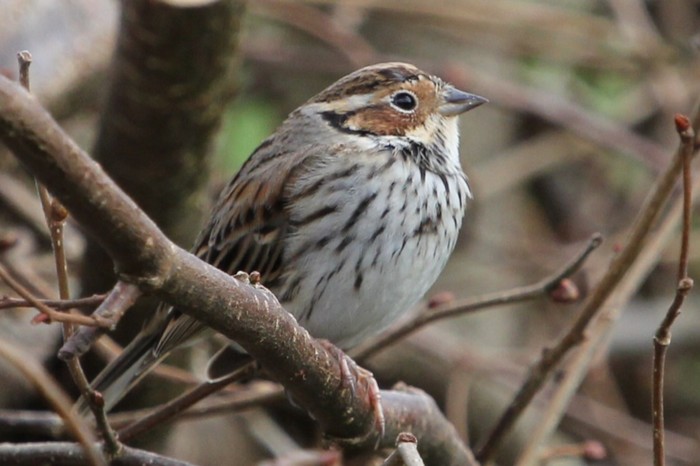
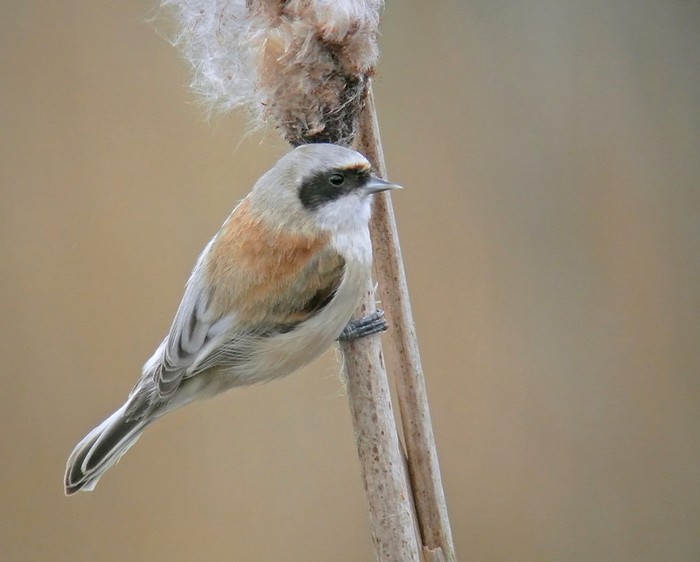
The early April departure of a few of our wintering Great Grey Shrikes got under way this week - 25 noted in all, with some favourites of recent months making a move to pastures new.
The northeast of England managed to hold on to two birds this week, still around Stanhope (Co. Durham) to 4th - a rather nice purple patch being enjoyed by birders there of late - and also still in South Yorkshire at Thorne Moors NNR and Midhope Moor, while the northwest saw two birds linger at Dalton Crags (Cumbria) to 5th (with one again on 6th). Two singles were in Derbyshire this week, one remaining at Beeley Moor to 5th with another seen near Derby, at Thulston on 2nd. Two further Midlands birds were noted on 6th; in the Forest of Dean, at Staple Edge Wood and at Black Hill (Shropshire) with one at Brown Clee Hills on 7th.
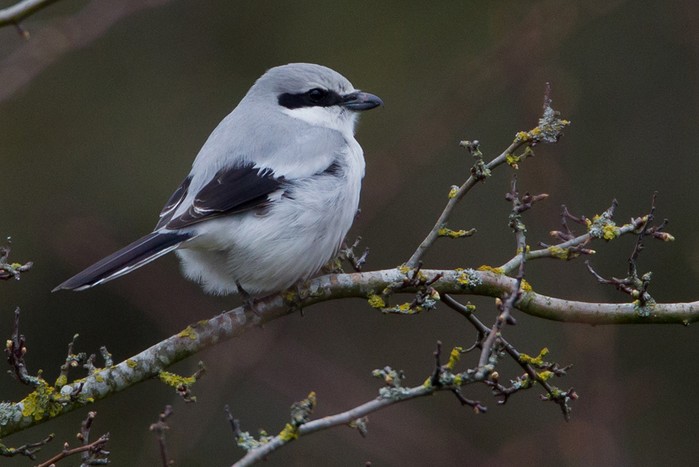
Norfolk retained two Great Grey Shrikes - at Roydon Common to 6th and at Grime’s Graves to 7th while the southwest saw one remain around the Warren House Inn area of Dartmoor to 1st and in Dorset, at Wareham Forest and still on Godlingston Heath to 1st and 4th respectively. The southeast fared well - up to seven singles there including three in East Sussex (at Lewes Brooks on 4th, Charleston Reedbed on 5th and still at High and Over to 6th), singles remaining on Thursley Common (Surrey) to 2nd, at Chilham (Kent) to 3rd and in Hampshire’s New Forest to 5th while new was one at East Hendred (Oxfordshire) on 5th.
Lastly to Wales, where six or seven birds were counted around the Principality - two were seen at Cross Forest Inn (Ceredigion) on 4th, Powys held four (at Lake Vyrnwy to 2nd, still near Llandefalle to 4th, near Llandegley to 5th with another at Llanwrthwl on the same date) while another remained at World’s End (Denbighshire) to 4th.
Also heading away (not that they really got to us in the first place) - Waxwings - a singleton remained at Acomb (North Yorkshire) to 1st, 13 were noted again in Kesgrave (Suffolk) on 4th and, in the same county, two more were at Carlton Colville on 5th.
As usual, everything that lies ahead in terms of the scarce and rare birds that could head our way is entirely within the hands of Mother Earth and the weather she sends our way.
Warming southerlies could encourage the likes of Subalpine Warbler or Red-rumped Swallow towards us - both of which have been recorded daily in the seven days ahead. There’s been the occasional early April Whiskered Tern too - and the likes of further overshooting small herons (as usual, I’d already scribbled that bit before the Scilly Night’s rocked up…) and Woodchats could also wing there way to Britain and Ireland, but only if the conditions suit (Doh! Foiled again…up popped the belated PG news…).
Should the winds veer to the east or northeast, how about a really rare bunting - a mainland, twitchable Pine would be very well received and April has six records in all, three of which have fallen before the middle of the month. The last truly “available” bird came in January 2005, in Worcestershire. There’ve been just three Pine Buntings since the trio found in 2005, so a crowd will surface for the next one for sure…
Coming back in to the official rarity fold in 2015 is Rustic Bunting, having spent 10 years in the County Records committee wilderness, with records falling like a stone in the process. Before departing the BBRC list in 2005, there were 15 April records of this delightful Emberiza spread widely across the month, with several noted between 8th-14th.
Presumed re-orientating Nearctic passerines are the eternal outside bet - this month boasts seven Slate-coloured Juncos for instance, while two April 11th’s of the 80’s produced two big “Yank” rares…
Fair Isle welcomed a Song Sparrow to the island in 1989 for what turned out to be a 16 day stay. There have been just seven in all, three on Fair Isle and all of those came in April - while the Seaforth bird of October 1994 remains the last we’ve had…
More famous still, April 11th has produced Britain’s first Savannah Sparrow on Portland Bill - the “Ipswich Sparrow” remaining a remarkable rare on the British List, with only two more (of darker forms) appearing since, both in the autumn, both on Fair Isle.
A change is gonna come….precisely when is the question…but with temperatures due to drop again and cooler weather coming in again, maybe we shouldn’t get too carried away.
Mark Golley
08 Apr 2015











